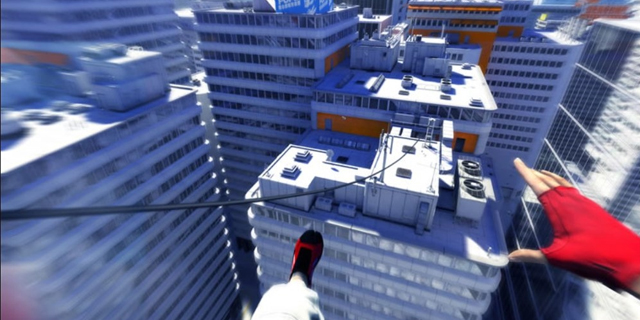
We’re living in the fastest time in human history. Our population is growing exponentially faster than ever before. Computers are making greater advances in weeks than they previously did in decades. Every site is racing to bring you information faster, and nobody is satisfied with a less than a lightning-quick Internet connection.
We need our modern consoles to be able to process graphics and audio at levels unheard of in years past. Lag has to be nonexistent, the frame rate can never drop below 30 frames per second, and loading screens must be kept short in order for us to fully enjoy what today’s entertainment can bring us.
But what does speed mean in games?
When Sega was going toe-to-toe with Nintendo, it was everything. Speed was its primary marketing message; Sega’s games are faster than Nintendo’s. Compared to Mario games, Sonic was in a different galaxy. Levels blurred by as you sped through mazes, trees and loop-de-loops as you maneuvered the lovable blue animal to the end and defeat the evil Dr. Robotnik. So yeah, speed’s important.
Some of my favorite games were built on the notion that we are slow human beings, but we want to go fast. Really fast. Impossibly fast. I don’t even want to see what I’m passing by; I want my competition to eat my dust and choke on it when I come around again. I want to feel superior in a way that I’ll never be in real life. I want to feel the flow of the wind and the seeming helplessness from the enemies who can’t keep up.
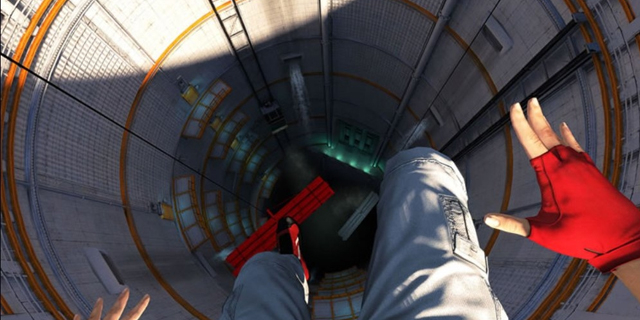
Mirror’s Edge is a first-person… action-adventure? Platformer? Shooter? It dips its hands into many genres. You play as Faith Connors, a “runner” who earns a living as a courier of messages and items between parties who wish to remain unseen. The dystopian city you play in veers away from the post-apocalyptic, futuristic settings we often see when we hear about an oppressive government. The city is absolutely gorgeous, and the game has one of the cleanest, most appealing aesthetics I’ve ever seen.
The outside areas looks polished. You want your rooftops to look like this; everything has a fresh coat of silver paint, with the odd blue, yellow and red objects thrown in to guide the player. You’ll often get distracted simply by taking in the backdrop skyline, which looks futuristic enough to be interesting, but not so outlandish that you don’t believe it could never exist. It’s sunny, with peaceful clouds providing more opportunities for the bloom lighting to brighten your route.
The gameplay doesn’t sound like anything special: you control Faith as she runs from one level to the other. Big deal. But the brilliance lies within the subtle design choices. When you start to run, you hear Faith’s breathing increase in rapidity and volume. A slight visual effect changes your view, giving the indication that you are really sprinting across the rooftops. Every time you jump, or duck, or roll, or run alongside a wall, you really feel like you’re running too.
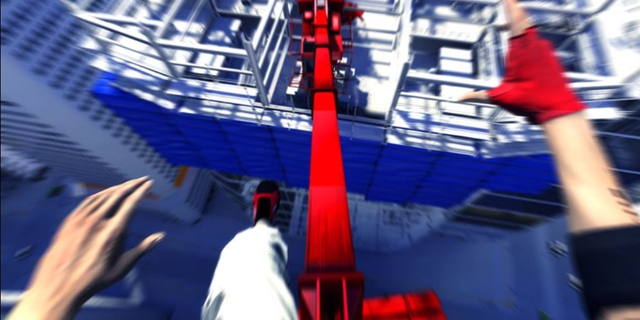
There are enemies, of course. Sadly, the limited gunplay is one of the least interesting aspects of the game. True masters will beat each level without using a single weapon. The best parts of Mirror’s Edge will come from you having to control Faith through rooftops, hallways, office buildings and the underground while being shot at by soldiers and helicopters. There’s an indescribable thrill when sprinting across a narrow plank, slamming into a doorway, running for my life while hearing the windows next to me explode in a hailstorm of bullets, sliding under a desk before reaching an elevator and being rewarded with a temporary reprieve. I’ve never seen a game emulate Trinity running from the Agents in The Matrix like this. It’s all about speed in Mirror’s Edge; from the constant threat of enemy gunfire to the more peaceful time trials, it rewards players who think creatively, keep their momentum going and go as fast as possible.
Few racing games can match the pure rush of F-Zero GX. It’s the fastest, most intense racing game I’ve ever played. Oh sure, everybody knew F-Zero on the SNES was a landmark title, and the highly improved F-Zero X was well worth a play. But neither were even close to the impossibly-difficult chaos of GX. It’s hard to believe this was a title released ten years ago. The graphics look a decade old, sure, but it’s a prime example of how speed works. It still holds up today.
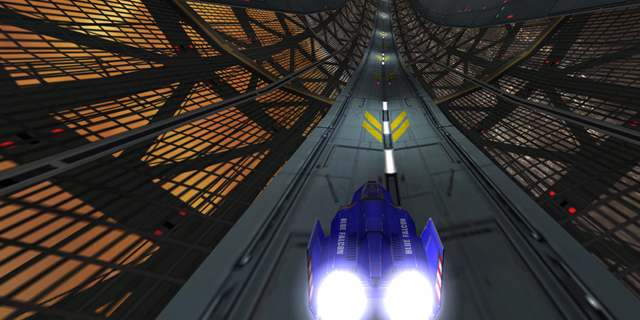
It’s a futuristic racing game; you go against 29 other racers at insane speeds, trying to reach the finish line. On the higher difficulties, it will be a miracle to even finish, let alone score a top spot. Corners approach faster than you can react; it’s simply not possible to process some turns without advanced knowledge. Coming in first place usually requires absolute track memorization, quick thinking and some luck. If an errant computer player bumps you off your trajectory, or a single mistake is made, it often means you’ll have to reset the entire race. Blinking while playing F-Zero GX can be a hindrance.
It’s overwhelming, but the controls are so tight that you’ll be hooked instantly. The soundtrack pumps you up (as if you needed more adrenaline), and the frame rate never drops. Ever. It’s a precise, professional, polished package, and it’s all about speed. Tracks often deviate into maniacal forms, such as half-pipes and cylinders. Driving a futuristic race car while looping around a cylinder at any angle within inches of an active lava field is absolutely brilliant. In a psychotic display of programming, if you start attacking other racers, they’ll stop caring about finishing first and come back after you, relentlessly attacking you until you fall of the track or you’re dead. It’s good to hit and run, in this case. I wouldn’t trade it for anything. F-Zero GX has to be difficult, otherwise it wouldn’t be as fast, and that’s unacceptable.
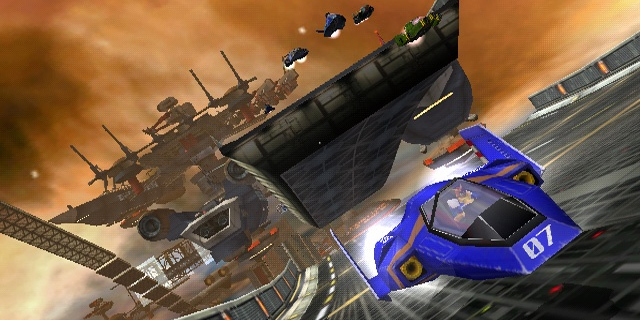
Another element of challenge in F-Zero GX comes from your boost power. After the first lap, you gain the ability to achieve a temporary speed boost with the press of a button. The catch? It drains your shields. There are spots on the track that recharge them, so positions are constantly shifting as pilots battle for the valued neon purple real estate. Do you boost ahead until your shields are completely gone, or do you play more conservatively and save your boosts for the final lap or stretch? Boosting ahead might seem like a good idea, but one bump into the wall will mean you don’t finish. It’s quite a tradeoff, considering some tracks don’t even have walls or many places to recharge your shields.
Mirror’s Edge 2 has been announced, the next F-Zero hasn’t. I’m hoping the next generation of games will mean smoother animations, better graphics and a greater sense of speed. I can only imagine what an updated F-Zero game would mean: online play, bigger and better tracks and maybe a first-person view. I don’t know if my brain could take that kind of stimulation, but I’m willing to give it a try.



















